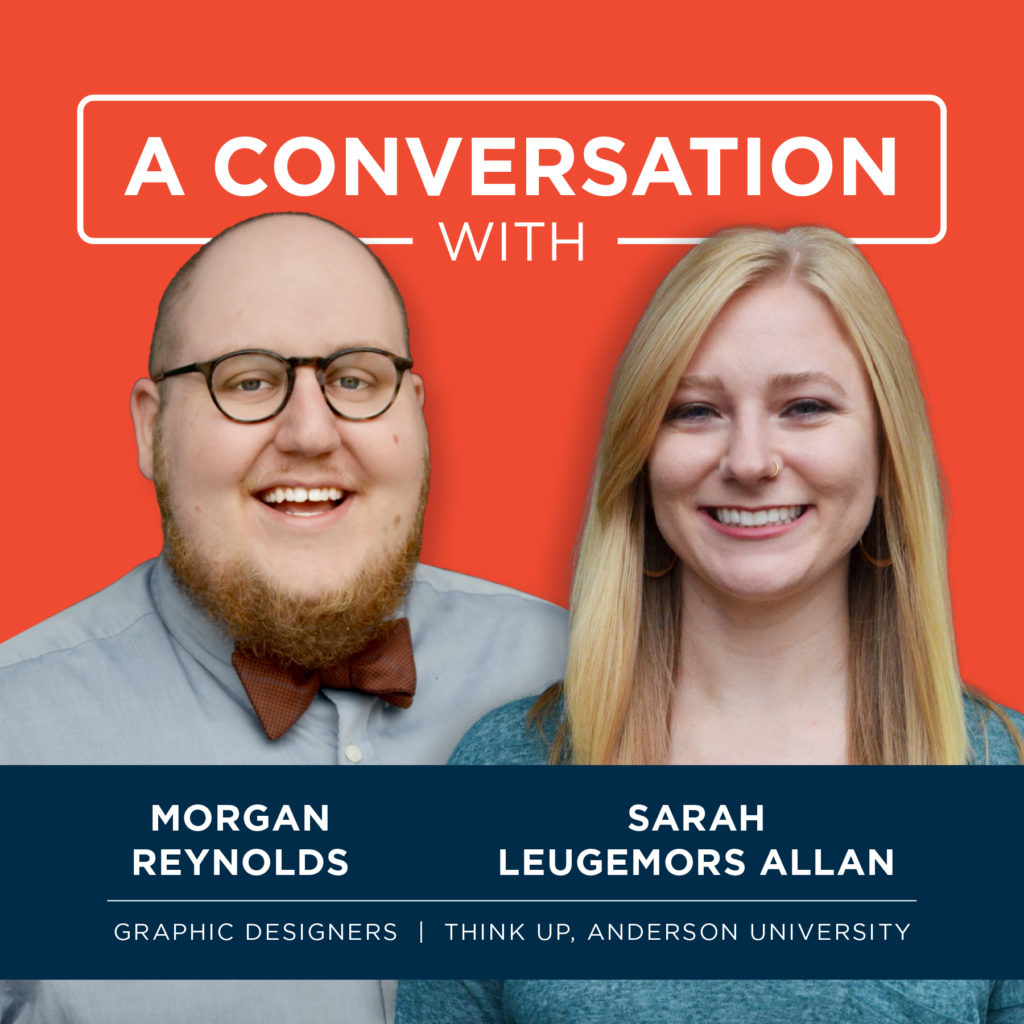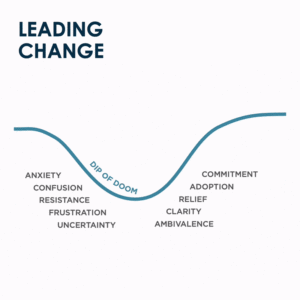Graphic designers by day, college professors by night. It’s no secret that our Thinkers have varied talents and interests, and we love when they use them to inspire others. Over the past few years, Thinkers Sarah Leugemors Allan and Morgan Reynolds have each spent time pouring into the next generation of artists and leaders as adjunct professors at their nearby alma mater, Anderson University.
As a company specializing in learning, we were excited to see what lessons they gleaned from their experience at the front of the classroom. Here are some highlights of what they’ve learned:
ADOPT A LEARNER’S MINDSET
Both Morgan and Sarah launched their teaching careers with the same class: Digital Tools, which introduces freshman-level designers to the Adobe Creative Suite and teaches them to apply design principles to digital media. On his first day, Morgan ushered his students to take a seat at one of the computers that lined two opposite sides of the classroom. Prepared to dive in on the basics of Adobe Illustrator, he told them to open the application so they could get started. A few seconds later, one future designer raised his hand and asked, “How do I turn on my computer?”
Whether you’re writing a lesson plan or building a training program, the first step is to consider the person on the other end of the material: the learner. Put yourself in their shoes and give them the information they need on their level. Remember there will likely be various levels of comfort and knowledge in the room.
Adopting a learner’s mindset applies to more than just the material—it’s important to have empathy for your learner. Think through what the end-user might feel as they encounter your content and how you can proactively take measures to ensure they aren’t overwhelmed, confused, or bored. For Morgan and Sarah, this meant approaching lesson plans with fresh eyes and not assuming their students knew something already—like where the power button is on the computer.
BLENDED LEARNING WORKS
It’s a simple truth, but people absorb information differently. Some students may learn best through visuals—others may thrive with collaboration, detailed instruction, or trying things themselves. Addressing each learning style keeps participants engaged.
Morgan and Sarah quickly learned they couldn’t expect all their students to be passionate about the material covered in each session. But they found when they implemented demonstration, practice time, and individual and group work with the lecture, the lessons seemed to click better and faster for their students.
FEEDBACK MAKES THINGS BETTER
Being an expert in your field and teaching it to others are very different things. Asking for feedback and evaluating how well your training material is helping you reach your goals is essential for achieving the best results.
At the end of each semester, students at Anderson University fill out an anonymous survey to evaluate their professors. Although receiving feedback can be daunting, Morgan and Sarah took the opportunity to grow. Morgan received feedback in his first semester about making his expectations clear, so the following semester he spent time explaining his grading process. His students felt better prepared for completing their projects. Feedback also comes through self-evaluation and looking for information gaps. Sarah noticed her students were losing points for craftsmanship on their first project, so she walked her class through the rubric for the second assignment, and the entire class received a higher score in that category. Incorporating both explicit and implicit feedback has enabled Morgan and Sarah to better prepare their young designers for success.
The insights Sarah and Morgan gained from their teaching experience can be applied to learning in any environment. Whether in the classroom or conference room—thinking about content from the learner’s perspective, finding different methods to teach the material for maximum engagement and retention, and asking for and applying feedback are critical pieces of successful learning.



